My Roots and My Home
I have mentioned earlier in my blogs, how proud I am of my roots in Marwar, its rich culture.
When blended with my embraced home of Maharashtra now for many generations, it gives me an identity which is unique, yet I’m sure many Indians can relate to. Having grown up in this nation of diversity — diversity of climate, geography, food, dressing, art, architecture, and of course tongues — many of us carry those multiple identities happily within us.
 My roots, in terms of deities we worship, food we eat, and rituals we perform, lie in the land of Marwar. I got to visit it only in my adulthood, after I had taken a path of graduate studies in architecture.
My roots, in terms of deities we worship, food we eat, and rituals we perform, lie in the land of Marwar. I got to visit it only in my adulthood, after I had taken a path of graduate studies in architecture.
I remember my first visit to the city of Jodhpur. With its majestic fort on the hill , sprawling palaces, colourful market selling beautiful crafts and clothes, authentic cuisine of mirchi bada, mawa kachori, folk music being played in the gullies, the city charmed me to no end. I was serenaded by the city, only to return to it every few years.
The Allure of Mehrangarh and Nayi Sadak
Visiting Marwar has been as rewarding as living here in Maharashtra. In all these years, I kept visiting Meharangarh fort of Jodhpur and felt awed by its majesty, architecture, and craft every single time.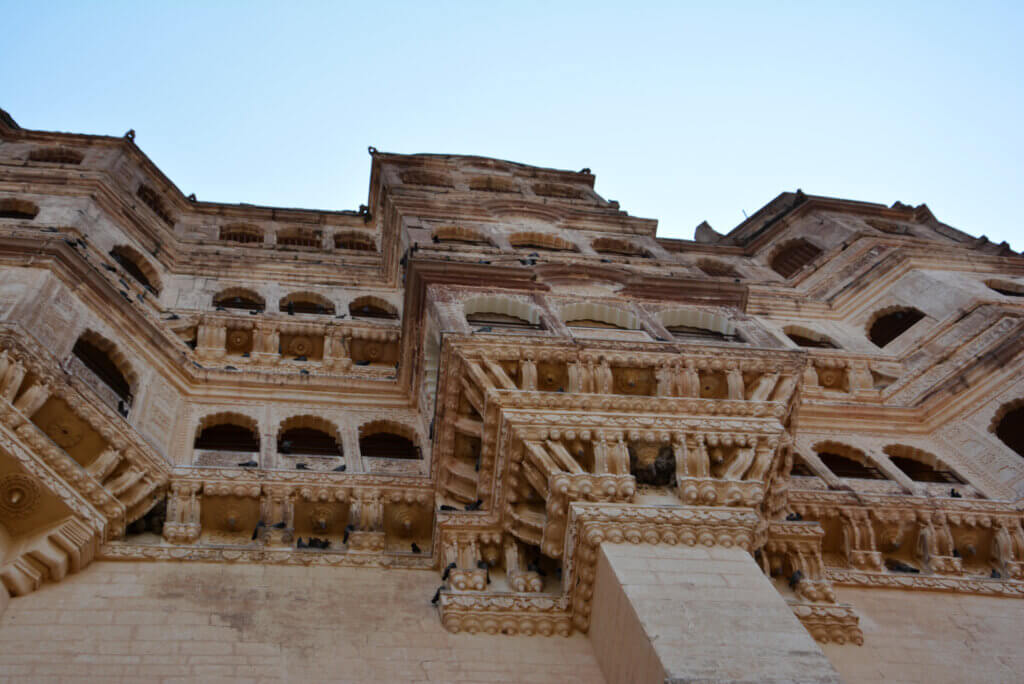 I returned to the market at Nayi Sadak for various crafts allured by their bright colours and amazing workmanship, but somehow always missed visiting and exploring the old city — or the Blue City — at the base of the hill fort.
I returned to the market at Nayi Sadak for various crafts allured by their bright colours and amazing workmanship, but somehow always missed visiting and exploring the old city — or the Blue City — at the base of the hill fort.
As I kept visiting the old parts of various cities in India for study with my students, this somehow contradicted my own way of looking at any place. I always truly believed that it is only in the oldest part of the city you can find the true meaning of the place.
Finally Stepping into the Blue City
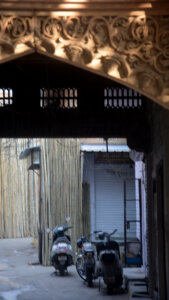 In the winter of 2021, when COVID was making its retreat, I decided to visit the lanes of the blue city which I had often seen from the fort walls above.
In the winter of 2021, when COVID was making its retreat, I decided to visit the lanes of the blue city which I had often seen from the fort walls above.
Always seen, yet never visited.
When Rao Jodha of Mandore decided to move his capital to a more secure location in the late 15th century, he chose this spectacular crop of hill in the surrounding deserts of Marwar for his fort. The common people, as usual, settled on the foothills of this fort.
With its winding lanes all lined with blue-painted houses, these settlements of blue city were first painted for the cooling effect it had on eyes in this arid desert. It was also adopted by the Brahman community to distinguish their houses from others. Since the pigment added to the paint cooled the inside of these homes, over time the whole settlement embraced the practice, making it a blue ‘cool’ city in the ‘yellow’ desert surrounding it.
We searched for a guide and found Buntu, an experienced local, enthusiastic to show us around the lanes with blue houses.
Stories in Every Lane and Courtyard
We started early in the morning from Ghanta Ghar (Clock Tower), which is the bustling market. After just a few turns, we arrived at a stepwell — Toorji ka Jhalra, built centuries ago in sandstone. 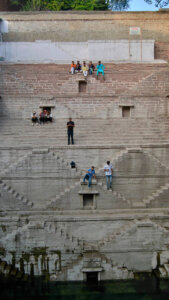 Built in 1740 by Maharani Toorji, this place stands as a testament to times where queens not just adorned palaces, but also shaped the city’s heritage and lifeline.
Built in 1740 by Maharani Toorji, this place stands as a testament to times where queens not just adorned palaces, but also shaped the city’s heritage and lifeline.
A symmetrical flight of steps takes one to the water below. Unlike many stepwells in Gujarat, and unlike the fort itself on the hill above, this well is not ornamental in its craft. It stands robust in its understated grace. This must have been a community place for the women who came here to draw water and ended up socialising and gossiping.
One can very well imagine the hustle and bustle on the steps of this place in the morning.
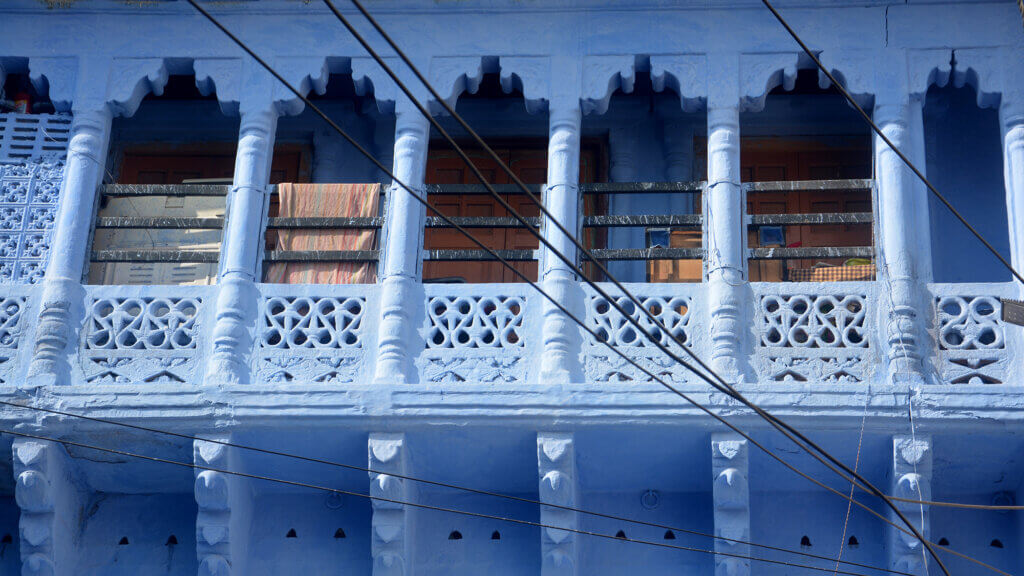 Soon we moved towards the Blue City. Each lane and each house greeted us with its own charm. A house with a courtyard here, a beautiful veranda with jali there. A house with twisted stairs leading to a terrace, a house with grilled balconies looking into streets and others looking into courtyards. A veranda open and inviting, a courtyard safe and protecting. Each lane had its story, woven beautifully by the houses around. Humble and charming, these houses welcomed every visitor who passed by, their residents ever smiling hosts.
Soon we moved towards the Blue City. Each lane and each house greeted us with its own charm. A house with a courtyard here, a beautiful veranda with jali there. A house with twisted stairs leading to a terrace, a house with grilled balconies looking into streets and others looking into courtyards. A veranda open and inviting, a courtyard safe and protecting. Each lane had its story, woven beautifully by the houses around. Humble and charming, these houses welcomed every visitor who passed by, their residents ever smiling hosts.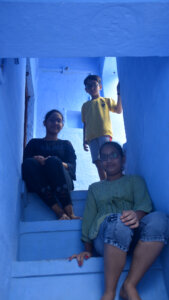
Our guide led us to Fatehpol, where stands one of the gates of the majestic fort, with an inner street leading to the hill.
We visited Padamsar Lake at the base of the hill, one of the twin lakes constructed in the 15th century which still boasts of regular water. We slowly climbed up the lanes of this blue city taking us to the Chamunda Mata Mandir on the hill. View of the city below from this temple is mesmerizing .It was fun to see the terraces of the houses we had just visited from above. Climbing down, we passed some beautiful havelis and temples on the way.
The entire blue city has nooks and corners, each inviting you to pause for a moment. It feels alive, like an organism in which people naturally belong.
When Stories Return Home
We were overwhelmed by the visit toblue city ofJodhpur — tired, yet deeply content. It had been a morning well spent, rich with meaning and discovery, leaving us with a quiet joy that lingered long after.
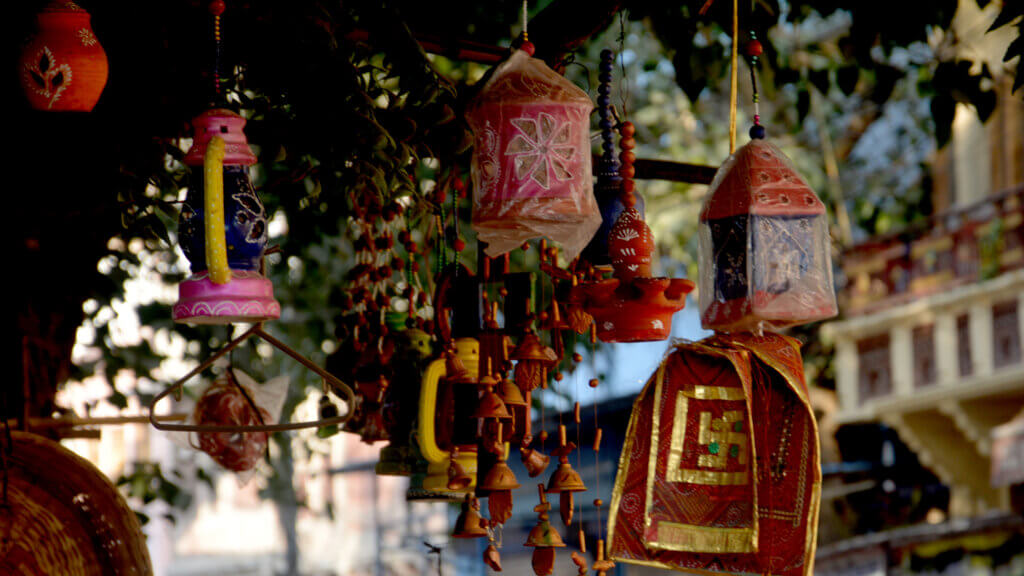 Our guide ended the walk at a snack shop with delicious pyaaz ki kachori. We parted ways later, but not before getting information on the best shops to buy bandhani and crafts from, and the best restaurant to eat the famous haldi sabzi.
Our guide ended the walk at a snack shop with delicious pyaaz ki kachori. We parted ways later, but not before getting information on the best shops to buy bandhani and crafts from, and the best restaurant to eat the famous haldi sabzi.
Perhaps the best part came afterward, when I shared this experience with my hosts in Jodhpur.Despite living there for years, they had never explored blue city. Inspired, they planned to take the walk themselves with friends and family.It was amusing, yet it spoke volumes about how we often stay unaware of the treasures that lie right within our grasp.
Trust Me, Jodhpur Welcomes All
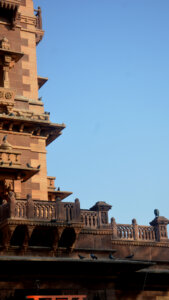 The old city of Jodhpur has a way of drawing you in and delighting you in countless ways — through its colours, flavours, stories, and the warmth of its people. As they say, ‘Padharo Mhare Des’ — come, be a part of our land.
The old city of Jodhpur has a way of drawing you in and delighting you in countless ways — through its colours, flavours, stories, and the warmth of its people. As they say, ‘Padharo Mhare Des’ — come, be a part of our land.
Gallery
Must Visit Places at Jodhpur
Mehrangarh Fort
Mehrangarh Fort, towering over Jodhpur from a rocky hill about 400 feet above the city, was founded by Rao Jodha in 1459 when he decided to shift his capital from Mandore to this more secure location. Over the centuries, successive rulers expanded it into one of India’s most formidable and beautiful forts, complete with intricate palaces, courtyards, temples, and a museum that showcases royal costumes, paintings, arms, and artefacts of Marwar. There is a ticketed entry, with different rates for Indian and foreign visitors, along with optional charges for using the lift or carrying cameras. The fort’s massive gates and walls still bear marks of historic battles, and standing atop its ramparts offers a breathtaking view of the iconic Blue City below, making every step into Mehrangarh feel like a walk through Marwar’s glorious past.
Jaswant Thada
Nestled just below Mehrangarh Fort, Jaswant Thada is a stunning white marble memorial built in 1899 by Maharaja Sardar Singh in memory of his father, Maharaja Jaswant Singh II. Often called the Taj Mahal of Marwar, its intricately carved marble glows softly in the sunlight, set amid peaceful gardens and small lakes. A modest ticket grants entry to explore its airy halls and portraits of Jodhpur’s rulers. With its quiet grace and gentle views of the fort above, Jaswant Thada is a must-visit that beautifully balances the fort’s grandeur with serene reflection.
Umaid Bhavan Palace
Located on the eastern edge of Jodhpur, Umaid Bhavan Palace is a grand symbol of compassion as much as royal splendour. Commissioned by Maharaja Umaid Singh in 1929 during a devastating famine, it was built mainly to provide employment to thousands of local people and completed in 1943. The palace today serves three purposes: it is still the private residence of the royal family, partly functions as a luxurious Taj heritage hotel, and houses a museum that displays vintage clocks, royal portraits, crockery, and an impressive collection of classic cars. There is a modest ticket fee for visiting the museum section. Walking through its Art Deco hallways and gardens, one feels both the generosity of a king who built to save his people and the elegance of a royal era that continues to live on.
Bal Samand Lake and Palace
Situated roughly five kilometres from Jodhpur on Mandore Road, Bal Samand Lake was built in 1159 AD by Balak Rao Parihar as a water reservoir to supply the city. Beside it stands the Bal Samand Lake Palace, later constructed as a summer retreat for the Jodhpur royal family. Today it operates as a heritage hotel, where visitors can enjoy a regal meal overlooking the tranquil lake. There’s no entry fee if you dine there, and the experience offers a serene glimpse into royal leisure against the backdrop of water and manicured gardens.
The Blue City of Jodhpur
At the foot of Mehrangarh Fort sprawls Jodhpur’s famed Blue City, a maze of narrow lanes lined with houses painted in soothing shades of blue. Originally, this colour distinguished Brahmin homes and helped keep interiors cool in the harsh desert heat, but over time, the entire settlement embraced it, creating a striking blue patchwork against the yellow sands. Wandering through these winding streets reveals charming courtyards, ornate jharokhas, small temples, and everyday life unfolding with warm smiles. Exploring the Blue City offers an intimate glimpse into Jodhpur’s living heritage, making it as essential to experience as the fort that watches over it.
Toorji ka Jhalra
Tucked near Sardar Market in the old city, Toorji ka Jhalra is a striking stepwell built in 1740 by Maharani Toorji, the queen of Maharaja Abhay Singh. Crafted from rose-red sandstone, its symmetrical flights of steps lead down to cool, clear water, creating a space that was once a vital community hub where women gathered to draw water, share news, and exchange laughter. Unlike the ornamentally carved stepwells of Gujarat or the towering architecture of Mehrangarh above, this jhalra impresses with its sturdy simplicity.
Padamsar Lake and Ranisar Lake
At the foot of Mehrangarh Fort lie Padamsar and Ranisar Lakes, both built in the 15th century by queens of Rao Jodha to ensure water security for the new capital. These interconnected lakes remain full through much of the year, standing as living examples of Marwar’s traditional water conservation methods. There’s no ticket to see them, and sitting by their edges offers a peaceful contrast to the imposing fort walls above, making it easy to imagine the old days when these waters sustained the people and animals of the Blue City.
Fatehpol
Fatehpol, meaning “Victory Gate,” is one of the historic entrances to Mehrangarh Fort and can be reached by meandering through the winding lanes of the old city. Built by Maharaja Ajit Singh in 1707 to commemorate a victory over the Mughal forces, this gate with its marks of cannonball hits stands as a quiet reminder of Jodhpur’s turbulent yet proud history.
Nayi Sadak
In the bustling heart of Jodhpur, Nayi Sadak is a vibrant street that connects Sojati Gate to Ghanta Ghar, drawing both locals and visitors with its rows of shops brimming with colourful bandhani and lehariya fabrics, handcrafted jewellery, mojris, and traditional textiles. It needs no ticket — the street itself is a living bazaar where bargaining and laughter fill the air. A stroll down Nayi Sadak immerses you in the everyday rhythms of Jodhpur, offering a slice of local life alongside a chance to carry home some of Rajasthan’s most famous crafts.
Ghanta Ghar (Clock Tower)
Ghanta Ghar, or the Clock Tower, stands proudly at the centre of Jodhpur near Sardar Market, and was built by Maharaja Sardar Singh between 1880 and 1911. While the tower itself is a modest structure, its true charm lies in how it anchors the surrounding market, which buzzes with vendors selling everything from spices to handicrafts. There is no ticket to visit this spot, and it serves as an ideal starting point for exploring the old city, soaking in its energy, and tasting quick local snacks.
Mandore Garden
About nine kilometres from Jodhpur lies Mandore Garden, once the proud capital of Marwar before Rao Jodha moved his seat to Jodhpur. The gardens are dotted with magnificent cenotaphs (chhatris) of Marwar’s former rulers, temples with intricate carvings, and a small museum that holds ancient sculptures and artefacts, for which there is a nominal entry fee. Wandering through these leafy avenues among structures that echo stories of an older royal era, one finds both grandeur and a peaceful retreat from the city’s hustle.
Local Cuisine to Try
- Mirchi bada: Large green chillies stuffed with spiced potato, dipped in gram flour batter, and fried until golden, offering a fiery, satisfying crunch.
- Mawa kachori: A deep-fried pastry filled with sweetened khoya, soaked in sugar syrup — rich and indulgent.
- Ghevar: A delicate, honeycomb-like disc soaked in sugar syrup, often topped with malai — a festive favourite.
- Phirni: A creamy, ground rice pudding served chilled, subtly flavoured with cardamom.
- Makhniya lassi: A thick, sweet lassi generously topped with cream and often laced with saffron, best enjoyed cold on a warm day.
- Gatte ki sabzi: Gram flour dumplings simmered in a tangy, spiced curd gravy, offering hearty comfort with every bite.
- Haldi ki sabzi: A winter specialty made from fresh turmeric cooked with yogurt and spices, delivering warmth and earthy flavour.
- Gulabjamun ki sabzi: Surprisingly delicious, this dish uses soft gulab jamuns simmered in a mildly spiced gravy, a creative twist on the sweet.
Best Places to Eat
- Vijay Restaurant: Located in the main chowk of the old city, it’s a humble place known for its simple, authentic vegetarian meals that taste just like home-cooked Marwari food.
- Mishrilal Hotel: Near Ghanta Ghar, this small, always-crowded spot is legendary for its thick makhniya lassi topped with rich malai. Also serves quick savouries perfect for a mid-exploration snack.
- Janta Sweet Home: With branches across Jodhpur, including on Nayi Sadak, it’s famous for pyaaz ki kachori, mawa kachori, and an array of traditional sweets that define the city’s snack culture.
- Shri Mishrilal Hotel (inside Sardar Market): Another very popular place, especially for its chilled saffron lassi served in tall steel tumblers — a refreshing stop right in the middle of shopping sprees.
- Gypsy Restaurant: Located in Sardarpura, it’s a little away from the old city but well-loved for its thali that offers a lavish spread of Rajasthani dishes in one meal.
- Rasraj Sweets and Namkeen: Found in several spots across the city, ideal for picking up boxes of ghevar, phirni, or savoury namkeen to take back home.
Souvenirs to Take Home
-
-
Handmade jewellery: From intricate silver ornaments to bold tribal designs, each piece reflects Marwar’s age-old artistry and makes for a timeless keepsake.
-
Rajasthani textiles and handlooms: Bandhani and lehariya dupattas, embroidered sarees, and soft khadi garments in vibrant hues, each woven with local stories and tradition.
-
Spices: Fragrant local masalas and chilli blends that let you carry a taste of Jodhpur’s kitchens back home.
-
Traditional jootis: Beautiful leather footwear often adorned with colourful embroidery, beads, or mirror work — perfect for adding a Rajasthani flourish to any outfit.
-
Bikaneri sweets and local delicacies: Famous treats that pair beautifully with a cup of chai, ideal to pack as edible souvenirs.
-
Handicrafts and khadi items: From carved wooden pieces to pottery and khadi stoles or kurtas, these treasures capture Jodhpur’s rustic elegance.
-
Places to Buy From
-

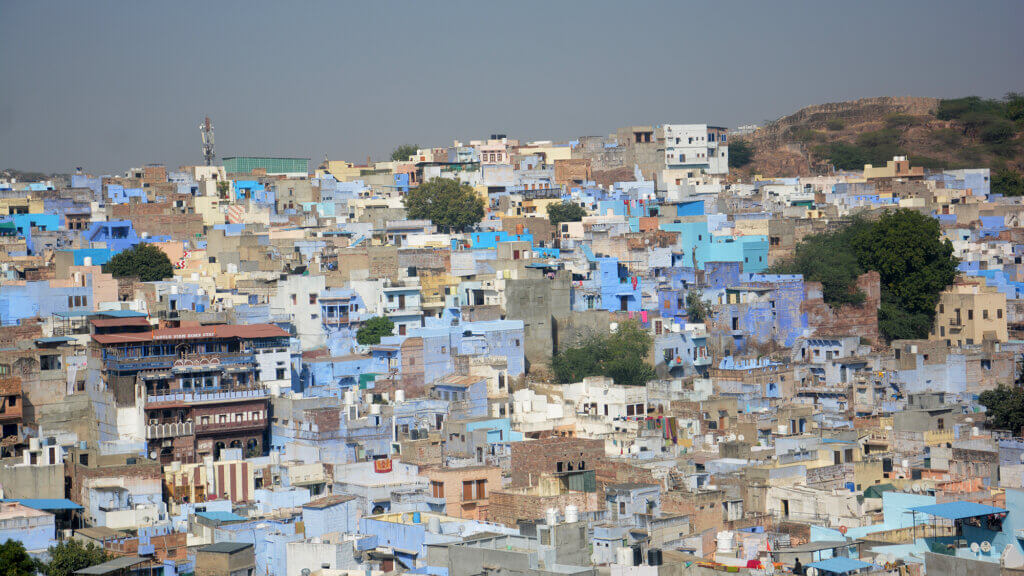


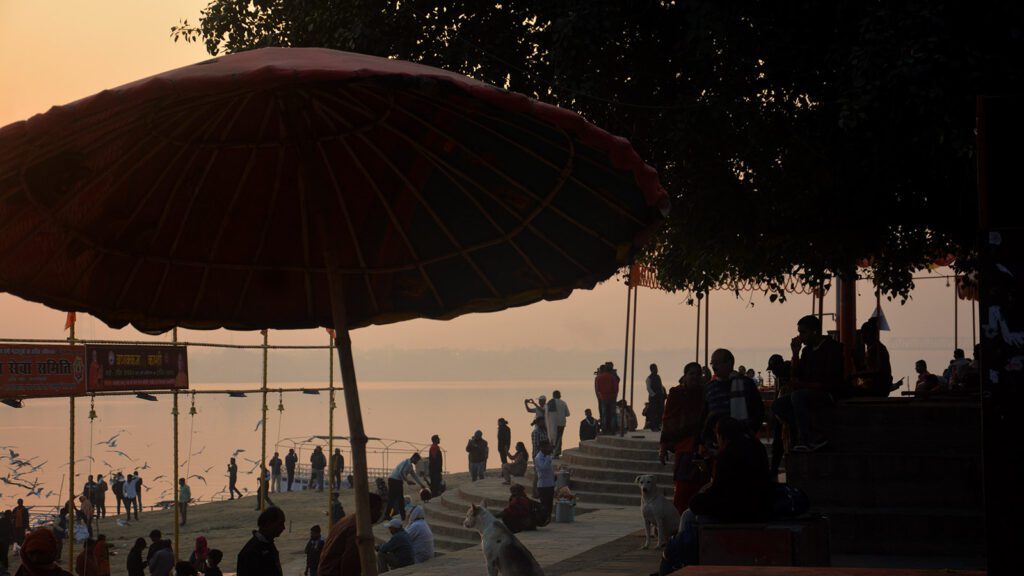
Very detailed description!
Wish to revisit the city with the guiding notes penned, to explore architecture, culture, cuisine and shopping experience all over again!
Thank you so much MAM
Your enchanting blog on Jodhpur has aesthetically captured the captivating beauty of this historical blue city. I had visited Jodhpur in 2012 and your blog has rekindled my ardent desire to visit it again. 💙🩵
Thank you Rameshji
Jodhpur has always been a fascinating travel destination.
I found Umaid Bhavan very captivating . Jaswant Thada will always be remembered by me for the group of singers, sitting below the arches of the edifice, singing ‘ Padharo mhaare des’ on the tunes of sarangi. But the monument which appealed me most was- Meherangarh fort. It is simply an architectural marvel and very well described by you. And yesss!! how can I forget the mention of mirchi bada ! With the green chutney!
So many happening places and a cheerful vibe of the city, I wonder how can we still call it a ‘Blue’ city.
Having your roots from that land, you saw the city through a different lens than a regular traveler. And yes , you surely brought out the bright colours through your write up!!! Thanks for sharing .
Always a pleasure to read your blogs and the vivid descriptions.
Thanks for giving such a wonderful insight.